Best pedal amps 2026: Get the sound, feel and response of an amp, all on your pedalboard
Downsize your rig with the best amps-in-a-box to suit all styles of music

For players looking to make their rigs smaller, lighter and more portable, the best pedal amps are somewhat of a godsend. Pedal amps aim to deliver the sound, feel and response of (usually) a tube amp, all in something that fits on your pedalboard.
Some of the best pedal amps might only give you one style of amp - so it’s literally like you’re plugged into the front end of a Fender Deluxe Reverb, for example. Others might have a wide range of different amp sounds and effects, allowing you to dial in pretty much any sound imaginable. These can be great for players wanting to cover much ground sonically.
How they work differs from model to model. Some will utilise digital modelling technology where the pedal will replicate everything the original amp would do as closely as possible. Others are analogue devices and are basically amps in their own right, just in a compact pedal format. We’ve included some FAQs below to help you figure out which will be the best pedal amp for you.
The quick list

With an ultra-powerful processor, superb amp tones, loads of effects, plus the ability to model your amps and stompboxes, the QC is one of the most powerful pedal amps on the planet.

This simple-to-use pedal amp is incredibly powerful, adding a 12AX7 tube to your tone to give you very realistic amp sounds while the price makes it accessible for any guitar player.

A relative newcomer to the pedal amp game, UA's UAFX range features some of the most accurate recreations of classic amplifier tones we've ever heard, and all for less than $500.

If you want simplicity from your pedal amp, the Strymon Iridium is hard to beat. With three classic amp models, its tactile controls and compact size make it great for live performances.
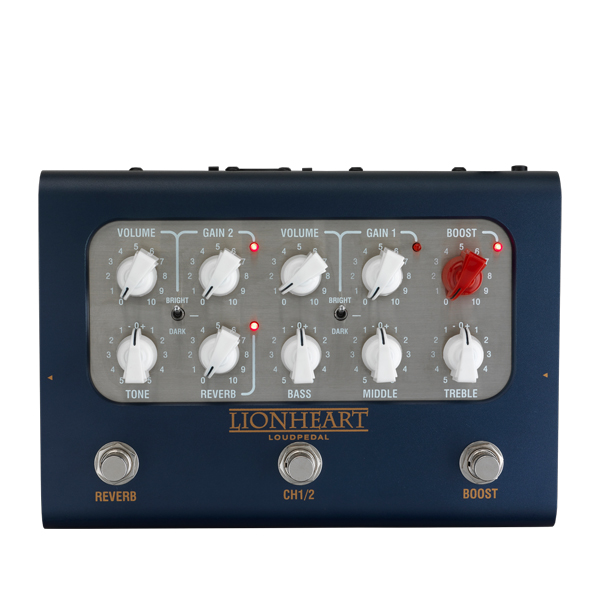
In collaboration with artist Tom Quayle, UK amp royalty Laney set out to distil its modern classic - the Lionheart - into a compact, durable pedal amp format. And, boy, did they nail it. The Lionheart Loudpedal is a twin-channel, 60-watt pedal amp that lives up to its name - this thing packs a punch.

If you want the best selection of amp tones and plenty of tweakability, the Kemper Profiler Player gives you all the sounds of the full-size unit, making it perfect for a recording rig.
Best overall

Specifications
Reasons to buy
Reasons to avoid
This is one of the most powerful units out there. Like the Kemper, it’s an amp profiler, so if you’ve got access to some nice tube amps, then you can capture their tone and feel and save it within the Quad Cortex so you’ve got access to them wherever you take it. If you don’t have that kind of access, then don’t worry - there are still tons of incredible options straight out of the box.
The sounds this thing can conjure up really are very good - some of the best digital amp tones we’ve ever heard. They’re pretty much indistinguishable from the real thing. It also reacts well to playing dynamics. You’ve then got the practicality of it - it’s got 11 rotary switches as well as a variety of connectivity options, making it the perfect live performance solution, as well as a superb recording tool.
You pay a premium for the Quad Cortex, but it really is one of the best pedal amps currently out there.
Read our full Neural DSP Quad Cortex review
Best budget option
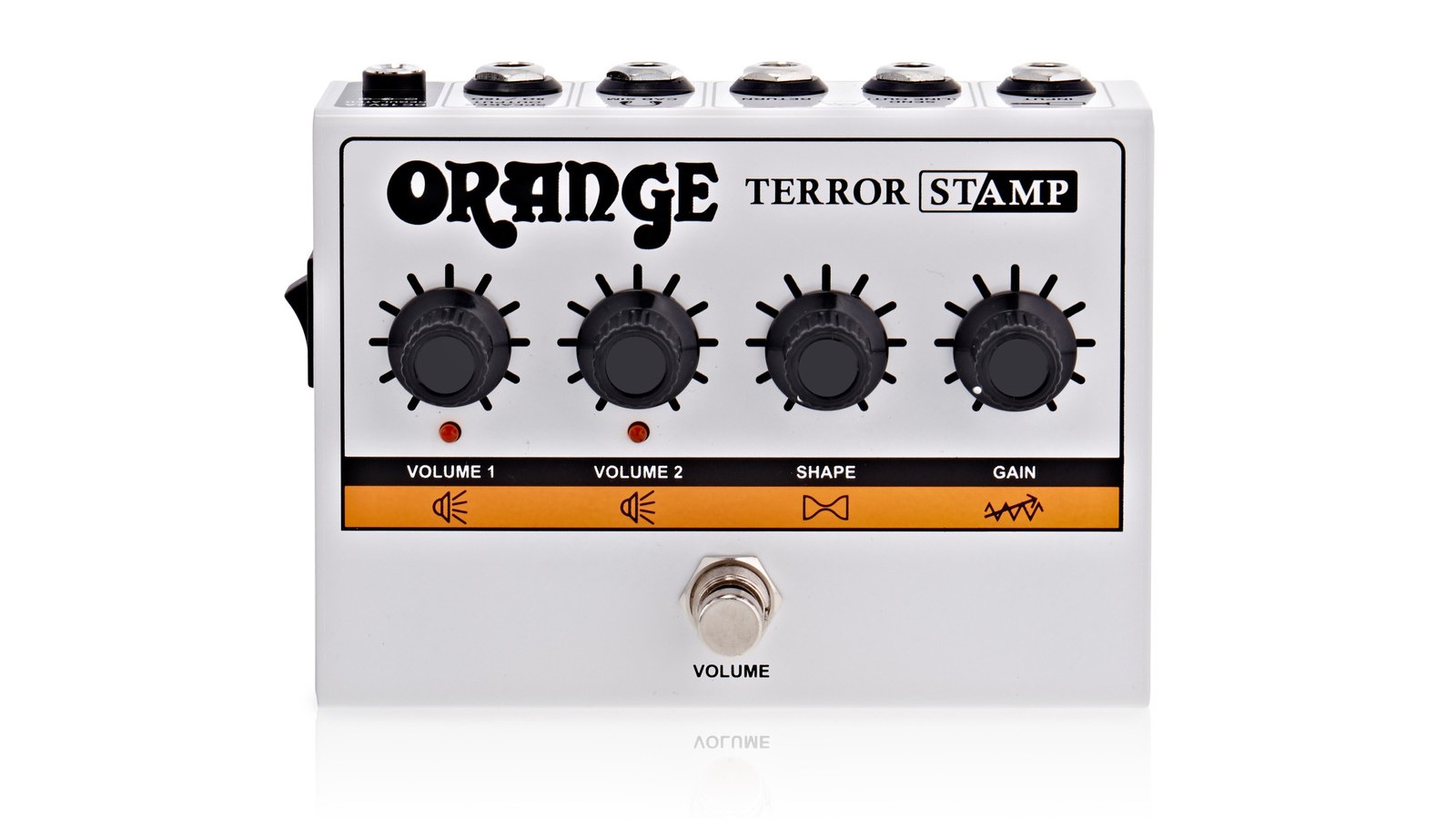
Specifications
Reasons to buy
Reasons to avoid
This is a really straightforward, powered pedal amp bursting with that classic Orange tone. It’s based on their Micro Dark head, and it’s got pretty much all the same features, but it’s in a pedal format. You can go from lovely chimey clean tones, through classic crunch all the way to punchy, high-gain saturation. What’s particularly useful with this though is the footswitchable volume boost, allowing you to set one volume for rhythm, and the other slightly higher for your lead sound.
This compact 20W pedal/head also houses a 12AX7, so you do get some of the feel and sound associated with tube amps. It breaks up nicely as you push it, and it reacts to playing dynamics. There isn’t a ton of flexibility with regards to EQ, but the single shape knob works well for most styles of music.
This little powerhouse will fit neatly at the end of your pedalboard - simply run a long speaker cable to a cab, or use the CabSim equipped output and you’re ready to go!
Read our full Orange Terror Stamp review
Best under $500

Specifications
Reasons to buy
Reasons to avoid
Universal Audio is known for its incredibly authentic-sounding plugins. It’s no surprise then that when it released a selection of pedals aimed at recreating some of the most iconic amps ever made, they were every bit as good as their famous plugins.
Each one of these pedals gives you the sound of a different amplifier, so whether you want the roar of a ’60s Marshall Plexi, or you want the chime and sparkle of old Vox AC30, these pedals can give you that. Their limitation is that they each only do one amp style, but they do it incredibly well. Within each pedal though, you have various options to shape your tone exactly how you want it, including different cab simulations. You can also save your favourite sounds as presets for easy recall.
If you’re trying to make your rig more compact, but you still want a great live sound, then these pedals can help you do that. They make for great home recording tools too, as you can forgo miking up an amp and just plug this into your audio interface. The feel and the tone really are close to the original amps, making them some of the greatest choices available to players when it comes to the best pedal amps.
Read our full UAFX Lion ’68 review
Read our full UAFX Ruby '63, Dream '65 and Woodrow '55 reviews
Best for live performance
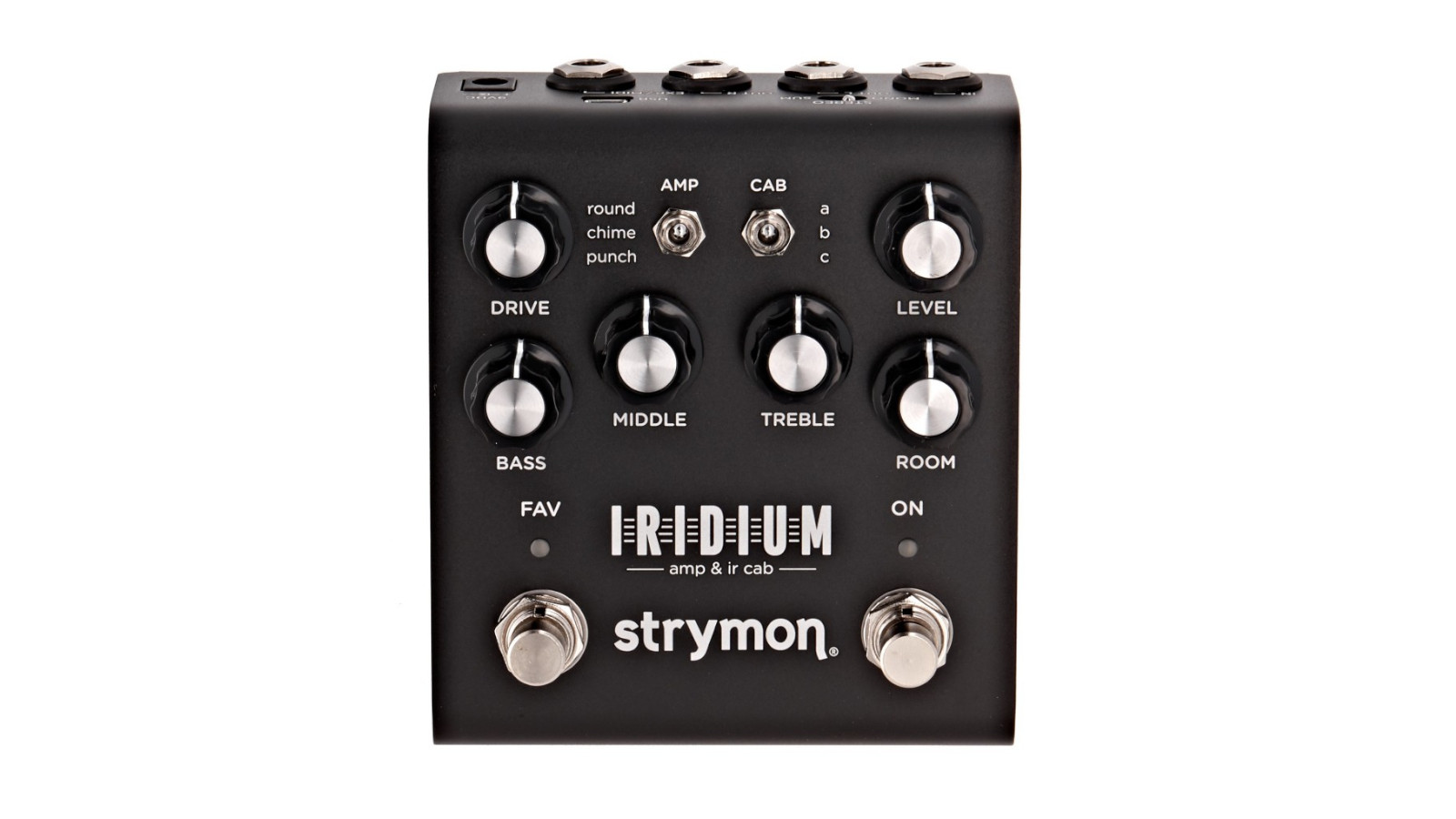
Specifications
Reasons to buy
Reasons to avoid
This is a feature-packed pedal amp, packing a ton of different high-quality sounds into a compact unit. It can cater for most styles of music, with incredible clean tones, lovely on-the-edge-of-breakup sounds, as well as punchy and aggressive higher gain settings.
There are three main amp settings: a Fender Deluxe Reverb, the top boost channel of an AC30 and a Marshall 1959 Super Lead. You can match each one of the amps with three of their own virtual cabinets, giving you an amazing range of tones. Even on just the Deluxe Reverb amp setting, you can sort of model different versions of that amp - it’s clever stuff! There’s also a Room knob that helps add different levels of ambience and really helps recreate some of that ‘amp in the room’ type sound.
The Strymon Iridium is really versatile, and all of the sounds it creates are excellent. Some pedal amps excel at one particular sound, whereas this does it all amazingly well. Whether you’re playing mostly clean, or you’re after tube-style breakup and distortion, this is one of the best pedal amps available.
Read our full Strymon Iridium review
Best for rock
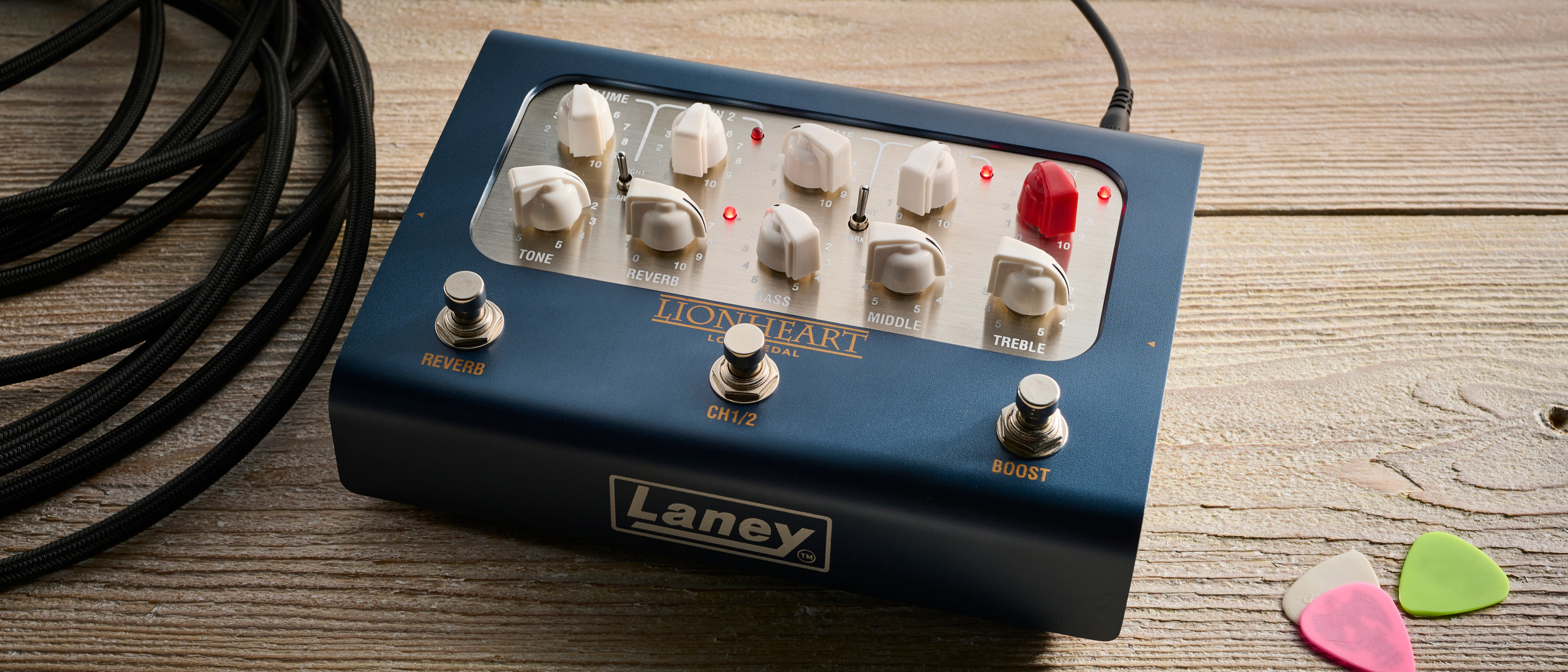
5. Laney Lionheart Loudpedal
Our expert review:
Specifications
Reasons to buy
Reasons to avoid
In collaboration with artist Tom Quayle, UK amp royalty Laney set out to distil its modern classic - the Lionheart - into a compact, durable pedal amp format. And, boy, did they nail it. The Lionheart Loudpedal is a twin-channel, 60-watt pedal amp that lives up to its name - this thing packs a punch.
But it is not just volume for volume’s sake. Laney has done a stellar job engineering the Class D power amplifier with an analogue solid-state preamp, giving the Loudpedal a valve-like character with all the sag and squishiness you would expect from a classic British valve amp.
At the same time, there is plenty of modernity built in. The Loudpedal features two impulse response (IR) cabinets, which you can toggle between with the flip of a switch. Through the LAIR app, you can choose from four IRs - two classic Laney cabs and two of Quayle’s own - or even upload your own. It sounds great, is easy to dial in, and offers enough modern features to satisfy. What more could you want?
Read our full Laney Lionheart Loudpedal review
Best for recording
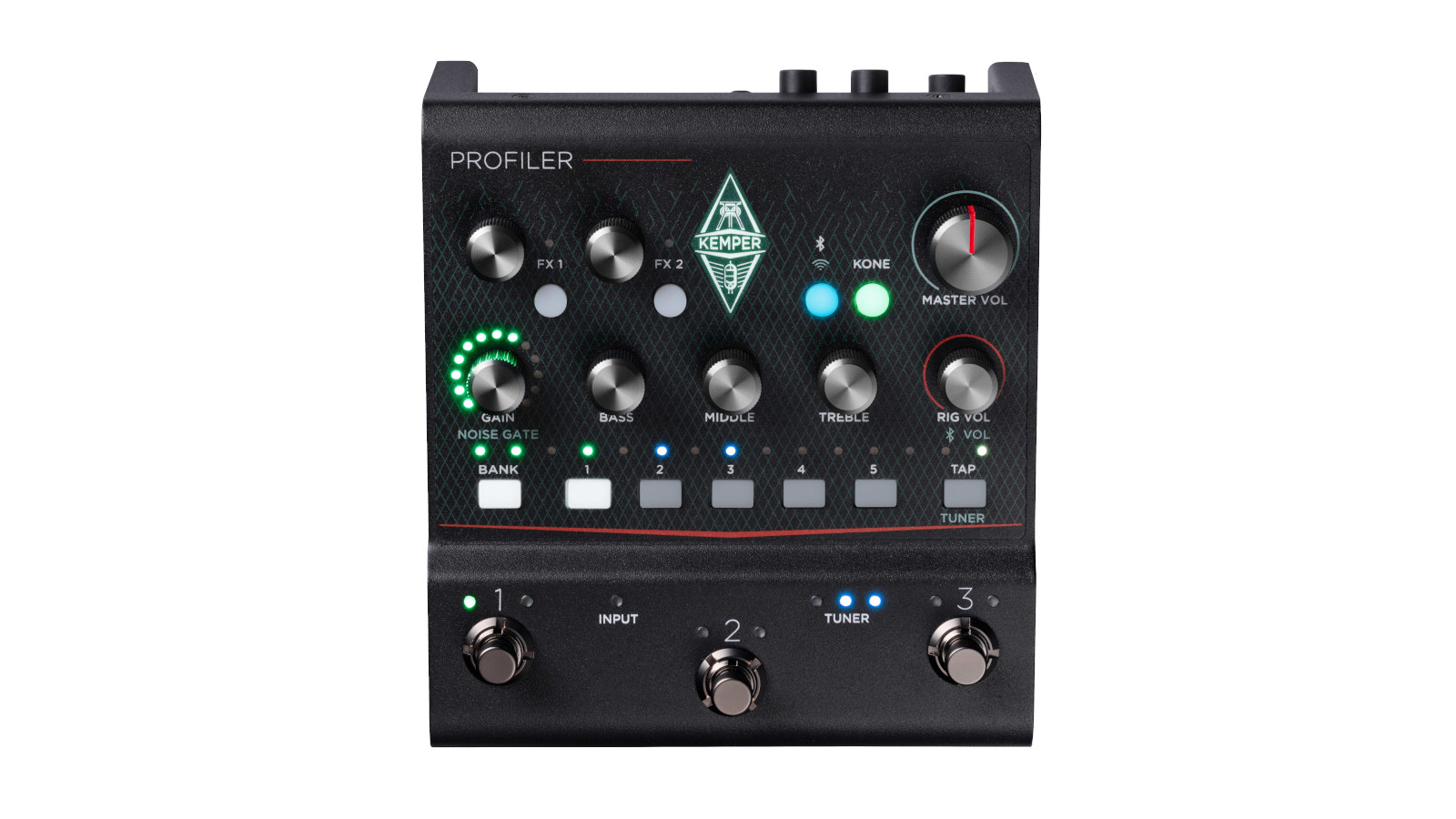
6. Kemper Profiler Player
Our expert review:
Specifications
Reasons to buy
Reasons to avoid
The original Kemper was one of the most game-changing pieces of equipment that we’ve seen in recent years. It’s still an industry standard, and you’ll hear it on so many modern recordings.
The Kemper Player is a more compact pedal version of that classic amp modeller, so you’ve essentially got access to hundreds of different amp sounds at your feet. Instead of a digital screen, the Kemper Player is controlled largely through either a smart device or computer, though once you’ve set it up, you can get an array of different tones just with the switches and buttons on the pedal - you can store up to 50 rigs within the pedal itself.
Like the original Kemper, you can use this as an interface, or you can plug into a powered cab, or just run straight to front of house using the XLR output. It’s super compact, taking up roughly the space of two regular pedals and it houses some of the best amp modelling sounds you can get your hands on!
More options...

Specifications
Reasons to buy
Reasons to avoid
Building on the success of the Tone Master amps, Fender has managed to pack its amazing tube-like digital technology into this super easy to use floorboard modeller.
Of course, you can dial up the sounds of various classic Fender amps, so expect lovely clean tones with a rich bottom end and clear, sparkling treble frequencies, but the Tonemaster Pro also has models of loads of other well known amps. Get British-style crunch, modern high gain metal sounds, as well as a wide range of different effects.
Aside from its large selection of fantastic sounds, what makes the Tone Master Pro so good is its user interface. It’s got a large colour touchscreen that lets you easily build and edit your rigs, though there are plenty of great sounding presets already built in. It’s user-friendly and intuitive, so you can make tweaks quickly and easily, and you don’t need to be a rocket scientist to figure it out!
Read our full Fender Tone Master Pro review

Specifications
Reasons to buy
Reasons to avoid
Designed to simplify the idea of amp modeling, the IK Multimedia Tonex Pedal does away with fancy screens and menu diving to give guitar players great sound with less hassle.
It doesn't do effects modeling aside from compression and reverb, so you're getting as pure an amp modeling experience as possible with Tonex, and boy does it do it well. We found the models to be astoundingly good, and the ability to quickly tweak using the physical knobs means you can always make the best of any guitar's natural sound.
Toggling the alternate modes is a little confusing at first, but once you get the hang of it you'll be quick editing using just the unit itself in no time. Of course, there's a companion app if you prefer to do your editing on the computer, and you can use it as an audio interface too.
Read our full IK Multimedia Tonex review

9. Blackstar AMPED 2
Our expert review:
Specifications
Reasons to buy
Reasons to avoid
This is an all-in-one guitar pedal amp - it’s got a variety of different sounding amp models, front-end stompboxes and an effects section. There’s also a tuner on board, 100W of power should you wish to hook it up to a cab, and even the option to model how different tubes react and sound. There’s a lot packed into this, making it one of the best value for money options when it comes to pedal amps.
With 100W, you’ve got a good amount of clean headroom, though you do also have the option of running it at 1W and 20W. As we’ve come to expect from Blackstar now, the AMPED 2 delivers a good selection of fantastic tones, making it a solid choice for any style of player - you can get warm, thick clean tones, mid-heavy crunch and chunky high gain sounds. What’s especially great about this pedal amp is that it’s really easy to navigate. Everything is done via knobs and switches, so you don’t have to go menu-scrolling.
It’s versatile, it sounds great, it’s easy to use and it’s relatively affordable; definitely one of the best pedal amps on the market today.

Specifications
Reasons to buy
Reasons to avoid
This packs a lot of the power of the flagship Helix in a much more compact unit. The HX Stomp gives you access to a massive range of amp sounds, effects, and IRs, enabling you to create tones suitable for any style of music.
There’s a lot you can do with this, and we’ve seen players use them in different ways over the years. You can use it as your sole tone generator - plug your guitar into it and run cables straight to front of house, or in-ears, or use it alongside your pedalboard and/or traditional amp. The sounds are great too - from cleans to high gain sounds, there’s literally something in there for everyone, whether you’re using it live or in the studio.
Its only potential downside is, due to the fact it packs so much in there, you don’t have quick access to all the sounds, as there are only three footswitches. If this might be an issue for you, you can expand it by adding an external foot switch, or you could punt for the larger Stomp XL.
Read our full Line 6 HX Stomp review

Specifications
Reasons to buy
Reasons to avoid
Each one of these pedals aims to replicate the sound of a particular classic amp. The JIMS45 is based on a Marshall JTM45, the Combo Deluxe ’65 is TC Electronic's take on a mid-’60s, black panel Fender Deluxe Reverb, and so on.
These pedals do a great job of getting you in the right zone in terms of sound and how they respond. They’re not identical to the real amps, but they’re pretty close. They’re also incredibly well priced, coming in at around a third of the cost of the Universal Audio pedals. Each pedal has a boost function, and a channel switch. There is only one set of knobs on each pedal (which is great as it saves space), but the pedal remembers where each knob has been set for the channel that you’re on.
The pedals have two outputs – one for running into the effects loop of an actual amp, allowing you to use them as a preamp, and the other with official Celestion speaker emulation for going direct. These things are simple, work well and they’re super affordable.
Read our full TC Electronic Ampworx review
FAQs

Do I need a power amp?
All of the best pedal amps will either be powered or unpowered. If it’s powered, then that means it can drive a speaker cabinet and will have a wattage rating. You can view it in pretty much the same way you would an amp head.
An unpowered pedal amp can’t be plugged directly into a traditional cab. Instead you’ll either need an external power amp, or you’d need a powered speaker. Many players use unpowered pedal amps to send a feed to front of house in a live scenario, or to use as a recording tool, plugging straight into an interface without the need for any microphones.
What is speaker emulation?
If you’re thinking of bypassing the traditional speaker cabinet and going straight from your pedal into a PA system or interface then something worth thinking about is speaker emulation. In a guitar amp, there’s a relationship between the power amp stage, the transformer and the speaker. That speaker then moves air which is what you hear. Without a speaker, there’s obviously a part that’s missing - speaker emulation addresses this and helps make a pedal amp sound more natural, like you’re in the room with an amp.
Some pedals may have a simple emulated output, and others might contain a variety of different options, even down to modelling a particular microphone in front of an amp. What will be best for you will depend on how much you want to be able to fine-tune and tweak your tone.
How easy are amp pedals to navigate?
MusicRadar's got your back
A lot of pedal amps offer you a variety of amp sounds. This is great for players that want to explore different tones and styles of music. With more choice comes the issue of how you navigate it all. Some pedals use LCD or digital menus - these allow you to deep-dive into particular settings and tweak all sorts of parameters to really nail the sound you’re after.
Many pedal amps will also offer a dedicated program you can use on your computer, as tweaking these settings on the units themselves can be particularly time-consuming. These dedicated apps are useful for getting your sounds in order before you take them to rehearsal or a live show.
Not everyone likes menu scrolling though, especially when the screens are small. Some prefer pedals that have good old fashioned knobs and switches, like you’d get on a traditional amp. These give a more tactile experience and let you see where all your settings are, right there in front of you.
Size considerations
If you’re thinking of getting a pedal amp, then there’s a good chance that size and portability are important to you. Some of these units are amazing space-savers. The Kemper Player, for example, is about the size of two regular-sized pedals, and gives you access to hundreds of different amp tones. Some of them do get quite chunky, though. If you’re wanting to add your new amp solution to a pedalboard, then make sure you’ve considered the dimensions first!
How we test
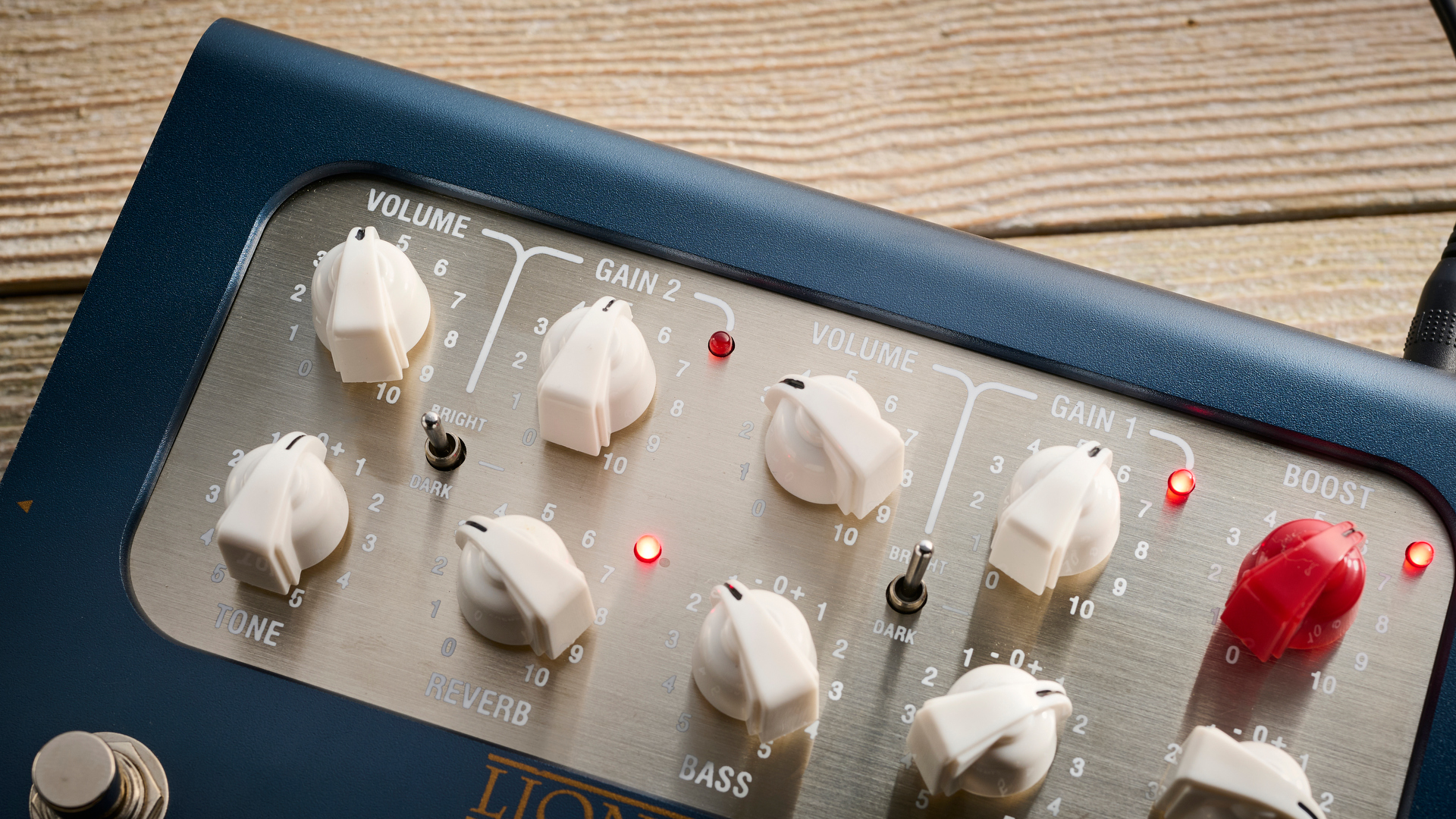
When testing a pedal amp, we'll aim to comprehensively put a unit through its paces in a home recording scenario, at the rehearsal room, and for live performances. Pedal amps are designed to replace your amplifier, so we'll judge the sound first and foremost, but always with an eye on its user friendliness too.
Setting up a pedal amp should be relatively simple, typically going at the end of an already existing pedalboard. As pedalboard users ourselves, we'll integrate it within our own rig to ensure the most realistic circumstances possible. We'll look at whether the connections are clearly marked, whether it has extra connectivity for integrating effects loops or running a signal to a desk as well as how easy the manual is to decipher.
Once things are set up we'll next look at the usability of the unit. Can you get a good sound out of it right away or does it need more finessing? We'll consider whether or not it requires an app to get the best out of it or can you use actual knobs to adjust the sound. We'll also live it with it for a period of time so we can really ascertain just how usable it will be for any musician.
Next, the sound. We'll usually start by putting all the dials at 12 o'clock before proceeding to tweak the knobs and see how effective the EQ is. We'll then adjust gain and volume settings to ensure its capable of operating in a variety of scenarios, whether that's at home or in a loud rehearsal space.
With our expert knowledge testing real tube amplifiers, we'll also use our well-trained ears to determine how close each pedal amp gets to the sound it replicates. Whether it can do edge of breakup well or even simulate the 'sag' of a tube amp. Does it have the same organic tone and harmonically rich distortion as the real thing? Only once we've answered all these questions will we then make a decision as to what rating it should receive.
Read more about how we test music making gear and services at MusicRadar.
Related buyer's guides
- Many of the best multi-effects pedals also simulate amps
- The best DI boxes are ultra-useful studio tools
- Up your recording game with the best guitar VSTs
- Power up your 'board with the best pedalboard power supplies
- Get filthy tones with the best fuzz pedals
- Make some room with the best pedalboards
Want all the hottest music and gear news, reviews, deals, features and more, direct to your inbox? Sign up here.
After spending a decade in music retail, Richard is now a freelance writer for MusicRadar, Guitar Player, Guitar World and Reverb, specialising in electric and acoustic guitars, bass, and almost anything else you can make a tune with. When his head’s not buried in the best of modern and vintage gear, Richard runs a small company helping musicians with songwriting, production and performance, and plays bass in an alt-rock band. Otherwise, you'll probably find him out walking the dog!
- Matt McCrackenJunior Deals Writer
- Ross Holder
